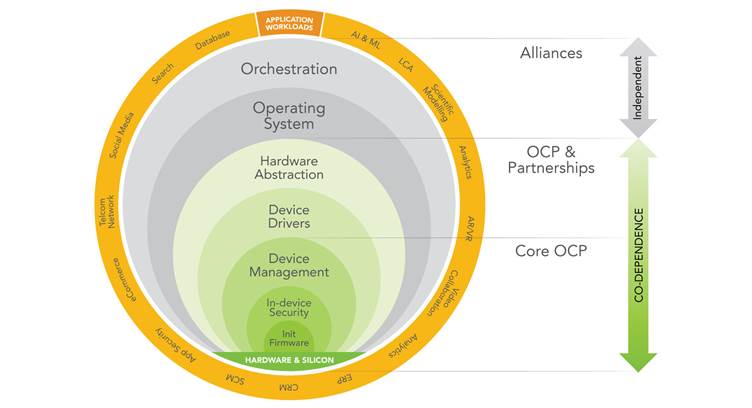The OCP Foundation, the nonprofit organization bringing hyperscale innovations to all, announced a new hardware-software co-design strategy that is exemplified by recent contributions to the OCP by Microsoft and Intel of the Scalable I/O (Input/Output) Virtualization (SIOV) specification, and a new collaboration with the SONiC Project now at the Linux Foundation.
Hardware-software co-design takes on new importance as software workloads become more diverse requiring specialized silicon to deliver top performance at an acceptable energy and ecological cost. System software, or firmware, will need to be designed using knowledge of the underlying hardware architecture to make appropriate engineering trade-offs along the cost vs performance curve enabling greener software.
The recent contribution of Microsoft and Intel of the Scalable I/O Virtualization specification is an important example of OCP's hardware-software co-design strategy where SIOV provides a hardware and software architecture for mass-scale virtualization of I/O. This specification is an evolution of SR-IOV (single root input output virtualization) removing scaling limitations, enabling 100's and 1,000's of VMs (virtual machines) or software containers to dynamically share a pool of I/O devices meeting the requirements of today's modern cloud native software. The OCP intends to grow a healthy community around SIOV becoming a catalyst to spark innovation in silicon and cloud architectures.
Collaboration between the OCP and the Linux Foundation expands to include the SONiC Project. In alignment with hardware-software co-design, collaboration continues around the Switch Abstraction Interface (SAI) project remaining at OCP and SONiC now at the Linux Foundation. The OCP is pleased that this collaboration allows the OCP to benefit from larger acceptance of SONiC by the Linux Foundation software development community, creating pull for OCP recognized switch hardware, opening new market verticals for OCP recognized equipment. While SONiC is the OS of choice for many hyperscale data center operators, other market segments need specialized features and SAI will enable the market to choose the switch OS best suited to its use cases.
Ashish Nadkarni, Group Vice President, Infrastructure Systems, Worldwide Infrastructure at IDC
The market for Data Center Infrastructure continues to evolve with increased silicon diversity prompted by adoption of AI and ML workloads. This diversity is reshaping the market which is under pressure to deliver the high-performance computational infrastructure that also manages its power and ecological footprint.






















